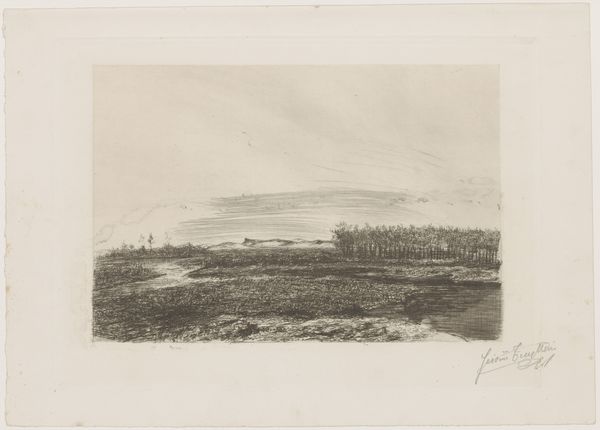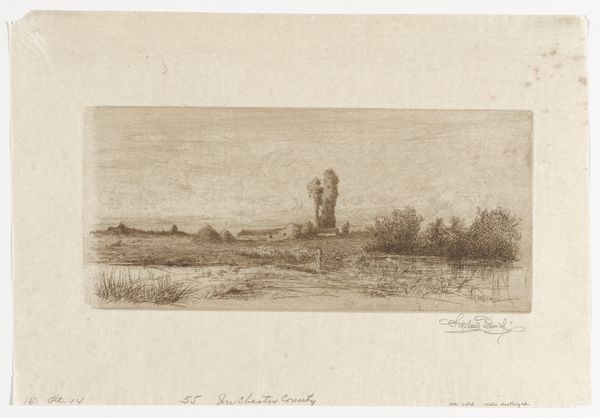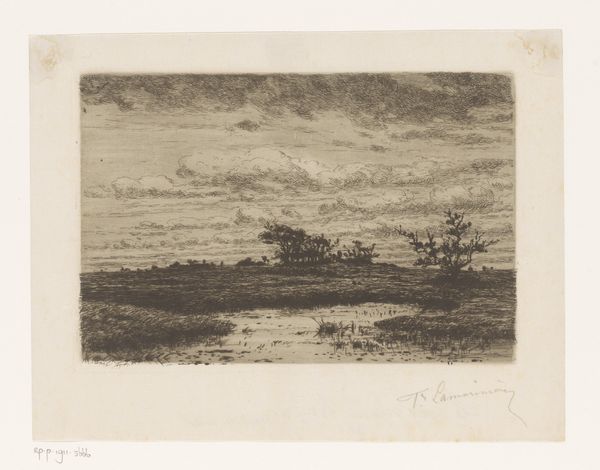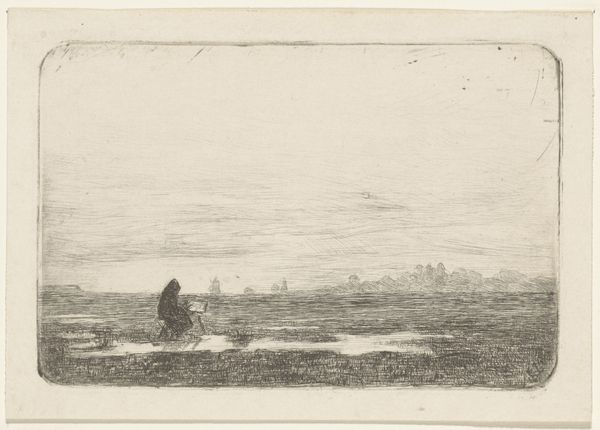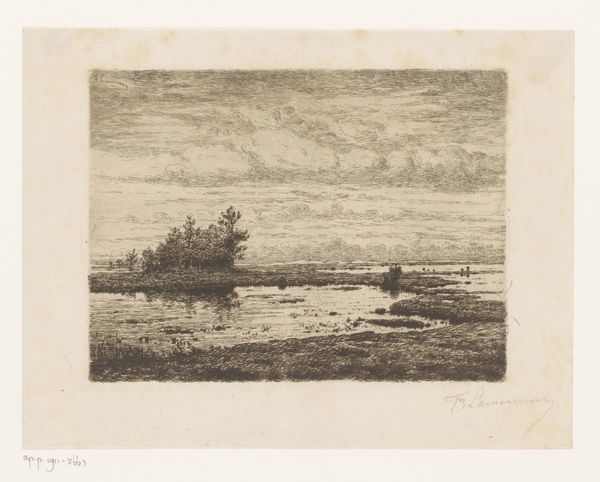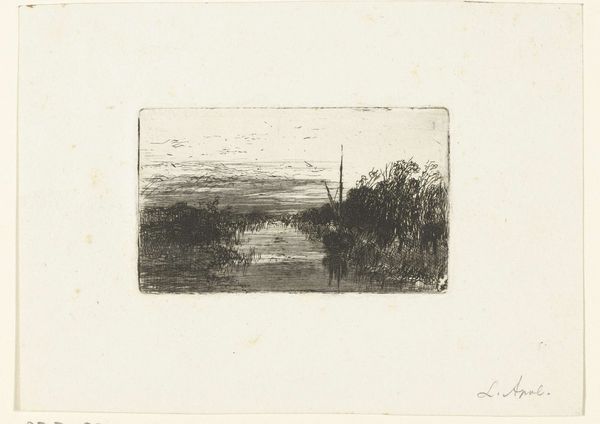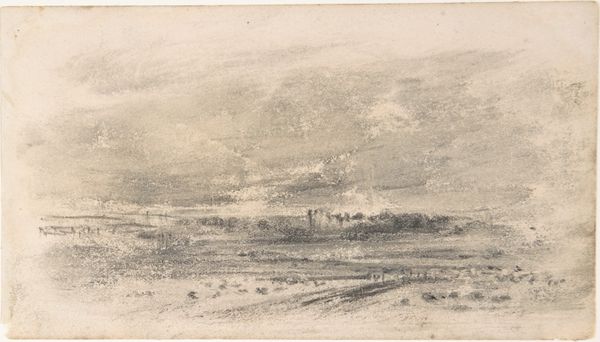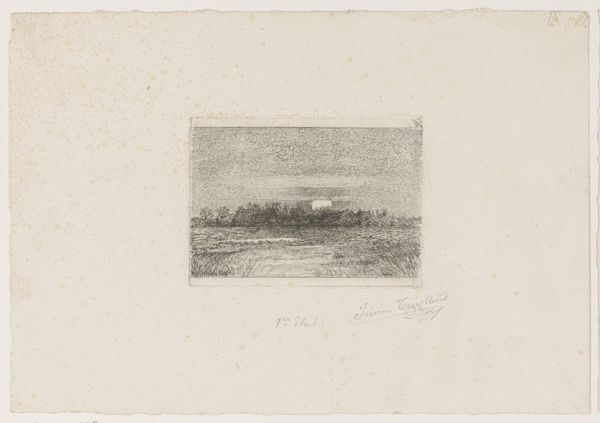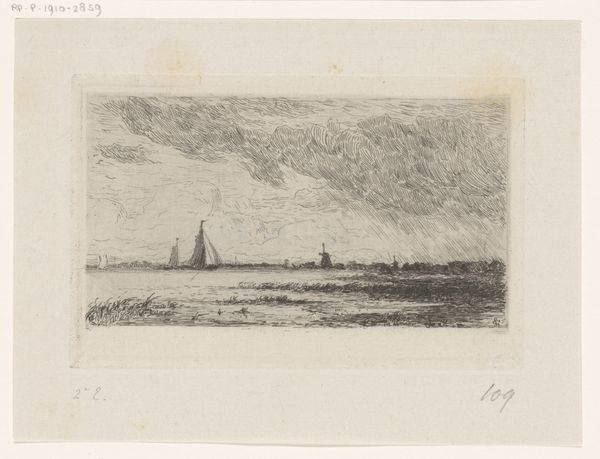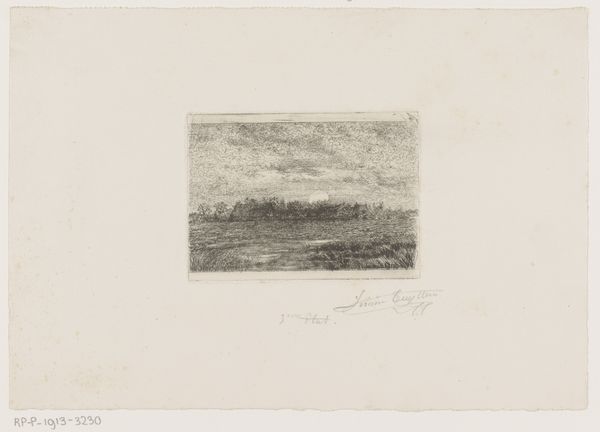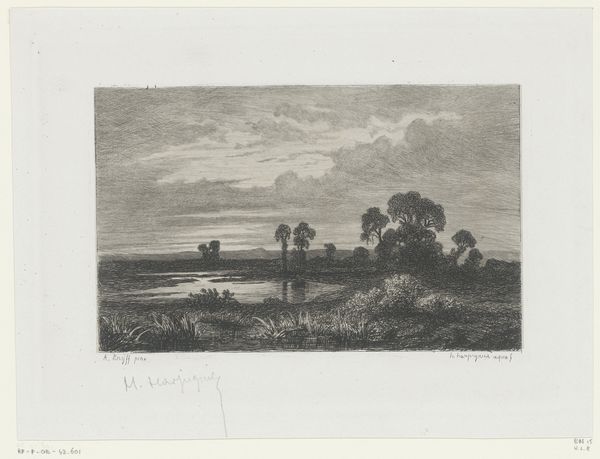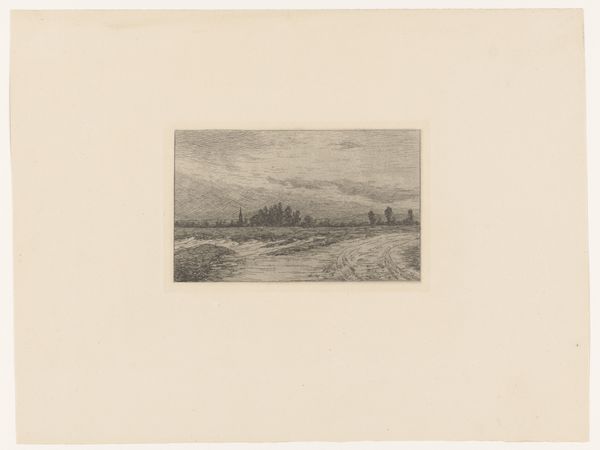
drawing, print, etching, pencil
#
pencil drawn
#
drawing
#
aged paper
#
light pencil work
# print
#
impressionism
#
etching
#
pencil sketch
#
old engraving style
#
landscape
#
figuration
#
pencil
#
pencil work
Dimensions: height 100 mm, width 147 mm, height 140 mm, width 179 mm
Copyright: Rijks Museum: Open Domain
Editor: This is "The Landscape Painter" by Floris Arntzenius, made before 1887. It's a pencil and etching on paper, with an impressionistic style. The lone figure in the landscape looks really isolated. What do you see when you look at it? Curator: The interesting element to me is the figure of the painter, centered in a landscape marked by the signs of the Netherlands: the flat expanse of the land, the waterways. I'd ask you to think about the *production* of landscape imagery in the late 19th century: who had access to these materials and tools for art making? Who was buying and selling these images? Editor: That's interesting, it looks like it could be mass-produced. Is that pencil work and etching something that was available to many artists at the time? Curator: Exactly. This reproductive capability afforded by the etching technique, in combination with pencil drawings, allowed for wider distribution of images and further complicated established hierarchies of "high" art and "craft". Was landscape painting democratized? What was the effect of cheaper and mass-produced landscapes in contrast with those from the Dutch Masters of previous centuries? Editor: So it's not just *what* is depicted, but also how widely available that image became. Curator: Precisely. What happens when the mystique of a handmade painting, painstakingly produced for a single buyer, encounters images that circulate more widely in printed form? It suggests a fascinating change in art’s function, labor and audience. Editor: I hadn't considered how the materials impacted its availability. It makes me see it differently now. Thank you. Curator: My pleasure. It is vital that we continue questioning not just what art represents, but *how* its materials and production situate it within broader economic and social contexts.
Comments
No comments
Be the first to comment and join the conversation on the ultimate creative platform.
